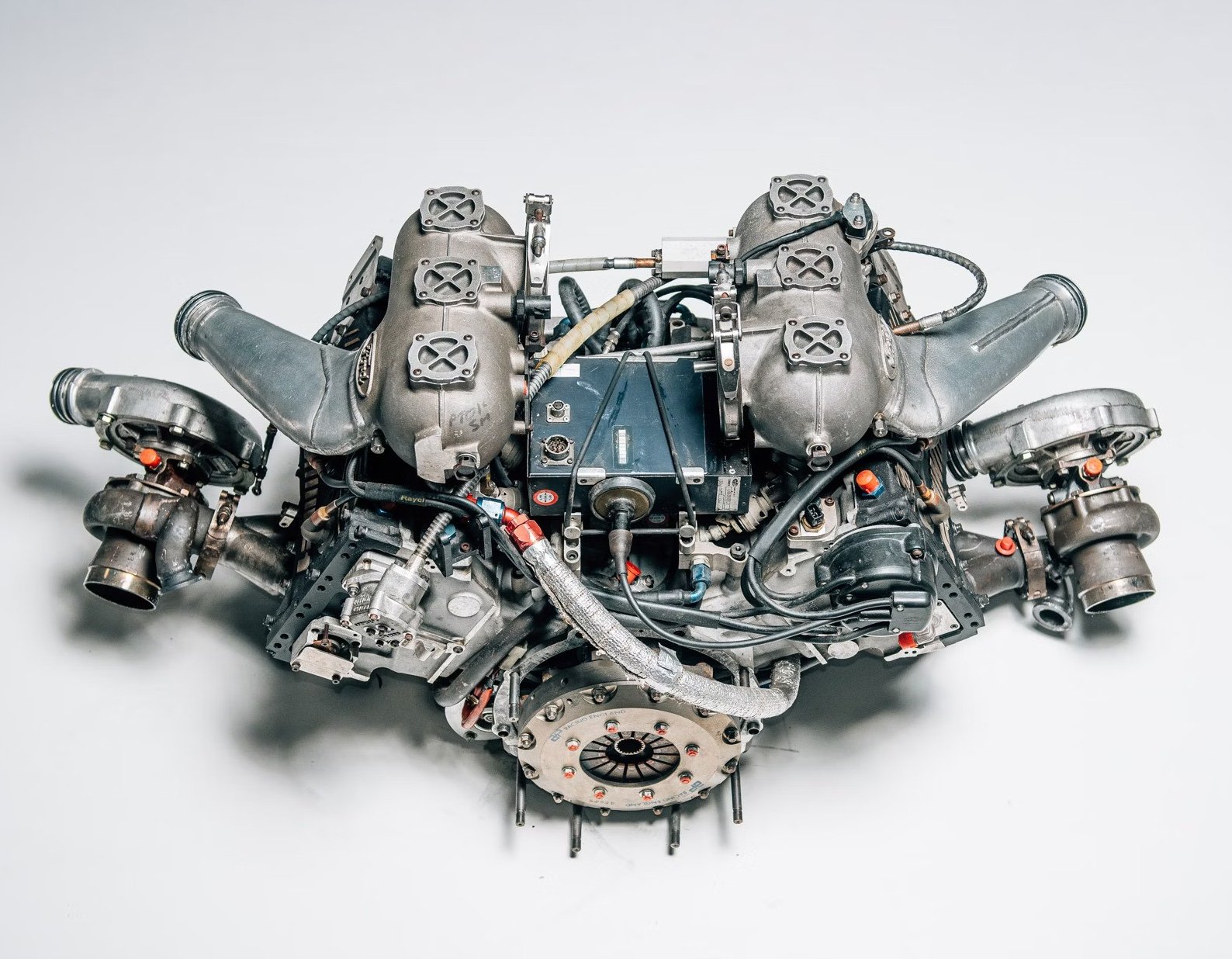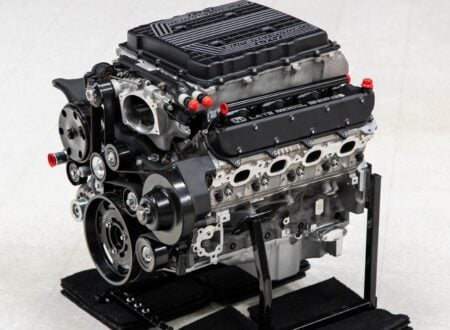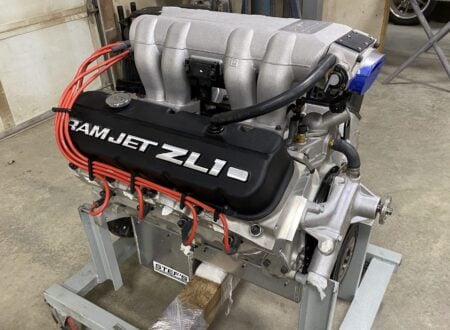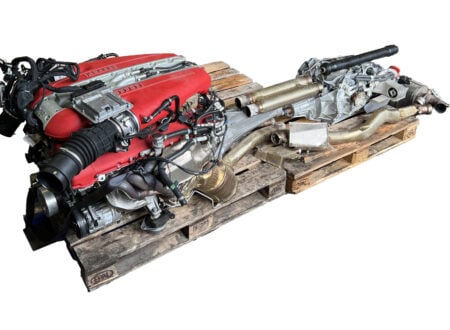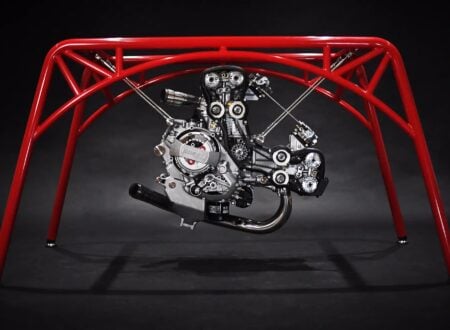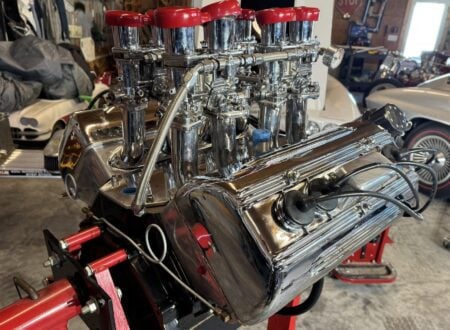This is an original Ford-Cosworth “GBA” twin-turbo Formula 1 engine from 1987 that retains its internal and ancillary components.
These engines are capable of 900 bhp in full working order, a remarkable figure given the relatively diminutive 1.5 liter displacement.
The Cosworth GBA Engine
The Cosworth GBA was a turbocharged Formula 1 engine developed in the mid-1980s by Cosworth Engineering in collaboration with Ford, intended as the company’s entry into the then-new era of turbocharged Grand Prix racing.
Above Video: This 1986 “behind the scenes” documentary shows the development of the Cosworth GBA Formula 1 engine, including the troubled early days and testing.
The GBA marked a significant departure from Cosworth’s prior dominance with the naturally-aspirated DFV and DFY V8s and was conceived during a period when turbocharged engines had begun to utterly dominate the F1 grid, some with power outputs over 1,100 bhp in qualifying tune.
The earlier Cosworth DFV V8 is still the most successful F1 engine of all time. It dominated the sport in the late-1960s and 1970s, winning 155 F1 World Championship races, 12 Drivers’ and 10 Constructors’ Championships. So the Cosworth GBA had its work cut out for it.
The Development Begins
Cosworth began work on the GBA F1 engine in 1983 after a short, ill-fated attempt at creating a turbocharged four-cylinder engine.
The project was funded by Ford, as the company sought to remain competitive in the face of increasingly powerful turbocharged engines from manufacturers like Renault, Ferrari, BMW, and Honda. The design was overseen by Keith Duckworth and Geoff Goddard, with input from Cosworth co-founder Mike Costin.
While most F1 teams had migrated to turbocharged powerplants by this stage, Cosworth had continued developing the DFY V8, an evolution of the original DFV, but it was quickly becoming outclassed in terms of outright power.
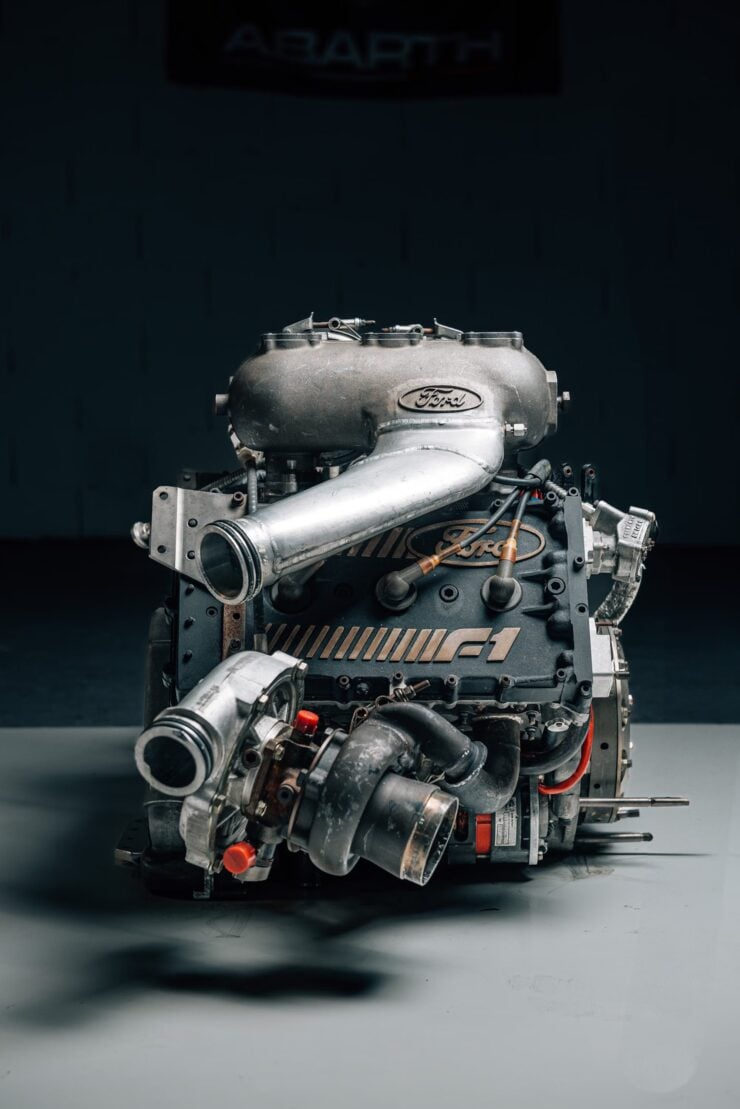

At this point, Cosworth was being left behind by its rivals, having perhaps become too comfortable with how successful they had been for so long with their naturally-aspirated DFV and its derivatives.
The Cosworth GBA Specifications
The GBA, often referred to simply as the “Cosworth Turbo,” was a 120° V6 with twin turbochargers and a displacement of 1.5 liters, as per the F1 displacement regulations of the time for forced-induction engines.
The wide bank angle allowed for a lower center of gravity and packaging advantages, including improved airflow and cooling arrangements. The engine had double overhead cams per bank, four valves per cylinder, and it had a dry sump. Early development issues, particularly with turbo lag, detonation, and heat management, delayed its competitive debut.
Cosworth, having had little prior experience with turbocharging in racing applications, faced a steep learning curve, and at its peak, the GBA project had over 100 people working on it.
The engine initially produced approximately 800 bhp in qualifying trim and approximately 650 to 700 bhp in race trim, placing it well below the peak output of rival turbo engines of the era, some of which far exceeded 1,000 bhp in qualifying tune. After some further development it would make as much as 900 bhp in qualifying.
The GBA Makes Its F1 Debut
The Cosworth GBA made its Formula 1 debut in the 1986 season with Team Haas (USA) Ltd, a collaboration between Carl Haas and Ford with technical support from Lola. The car was officially known as the Lola THL2. Alan Jones, the 1980 F1 World Champion from Australia, came out of retirement to drive the car, later joined by Patrick Tambay.
Unfortunately, the GBA’s development came too late to allow for thorough testing and refinement before its race debut. Reliability was a significant issue, and performance lagged behind the top-tier engines from Honda, BMW, and Ferrari.
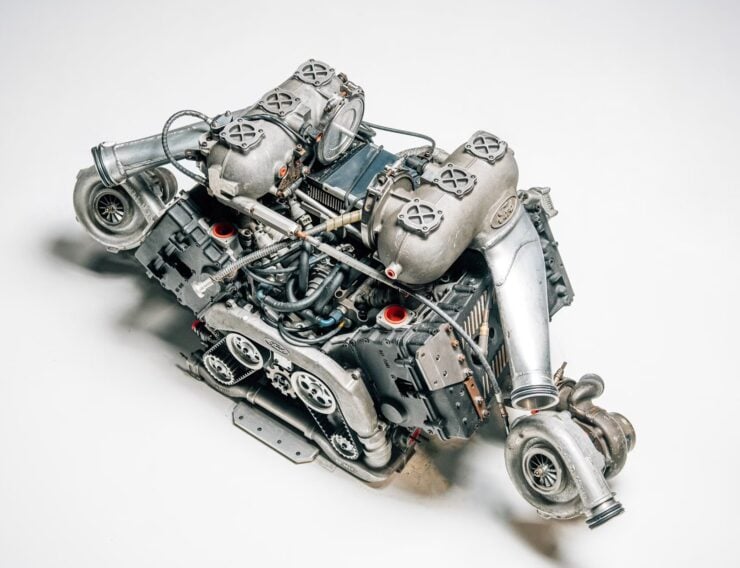

The engine’s installation in the Lola chassis was also problematic, and the overall package was simply not competitive. Haas F1 withdrew from Formula 1 at the end of 1986 due to a combination of poor results and the withdrawal of sponsorship from Beatrice.
For 1987, the engine found a second lease on life with the Benetton Formula 1 team, which ran the GBA in the B187 chassis. Drivers Thierry Boutsen and Teo Fabi piloted the cars through the season. Benetton achieved significantly better results than the previous year, with multiple points finishes and several podium appearances.
The team finished the season 5th in the Constructors’ Championship with 28 points – showing that with further development, the GBA could be competitive, and potentially even a Grand Prix winner.
Sadly this was not to be, by the end of 1987, Formula 1 was preparing to phase out turbocharged engines. New rules were already capping boost pressure and fuel capacity, with a total ban on turbos planned for 1989.
After this, Cosworth shifted their focus to meet the new regulations, with 3.5 liter V8 engines like the DFZ and later the DFR which powered the storied British engineering firm into the early-1990s.
The Ford-Cosworth GBA F1 Engine Shown Here
The engine you see here is one of the original handful of Cosworth GBA engines that were made and raced in 1986 and 1987. This engine is said to have been owned by Thierry Boutsen, a former Formula 1 driver who raced from 1983 to 1993 for teams like Arrows, Benetton, Williams, Ligier, and Jordan.
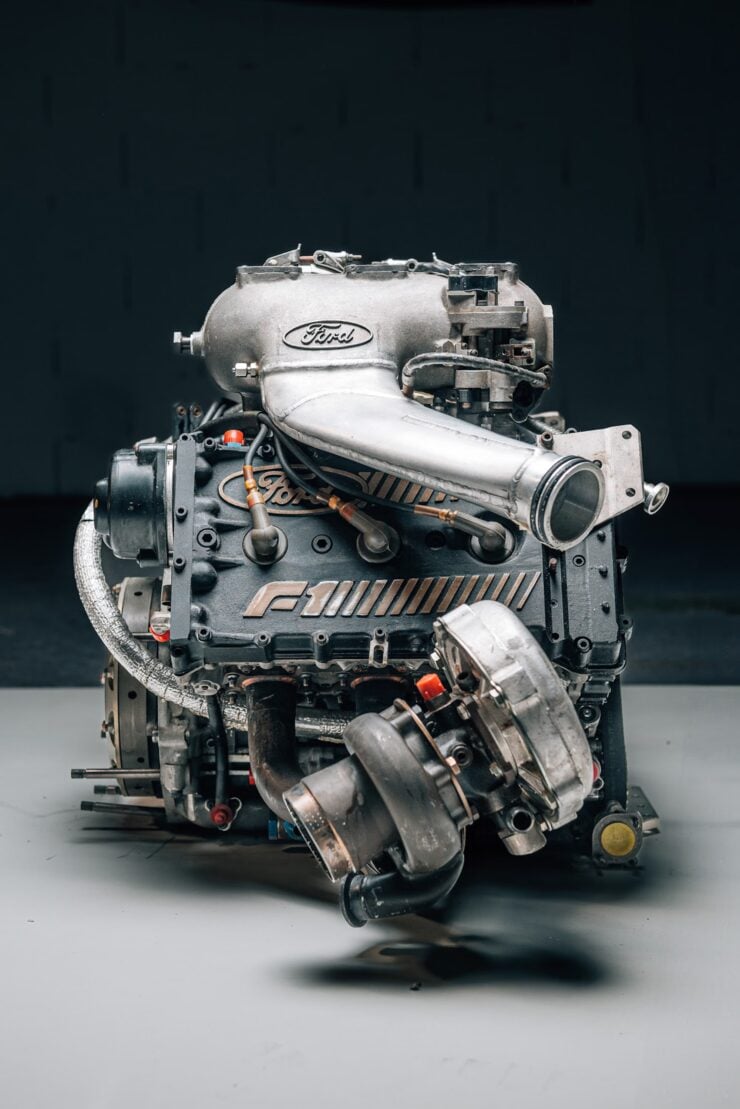

Boutsen would win three Grand Prix, and his best result was a fourth in the 1988 World Drivers’ Championship with Benetton. He is now based in Monte Carlo, where he runs his own company selling private jets.
This engine is said to still have all of its internal components in place, as well as its ancillaries, and it’s now being offered for sale out of Monaco. If you’d like to read more about it or place a bid you can visit the listing here on Collecting Cars.
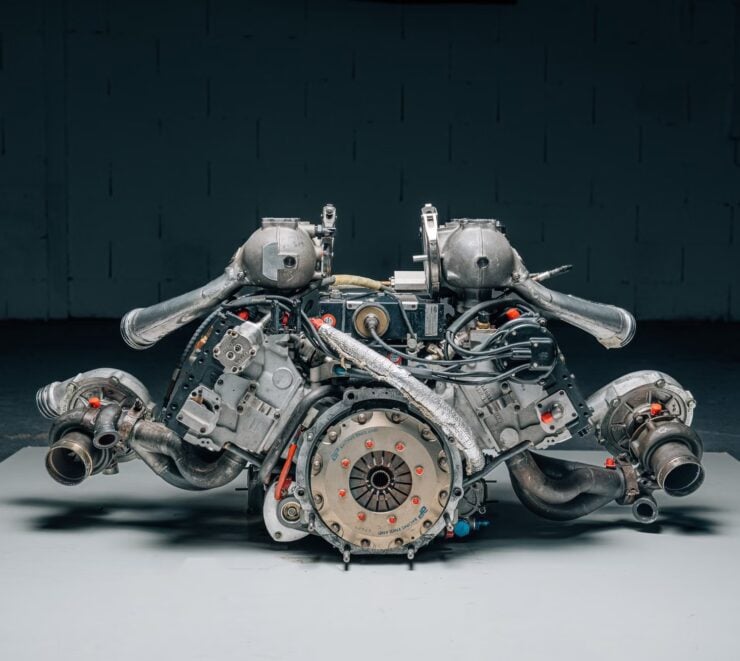
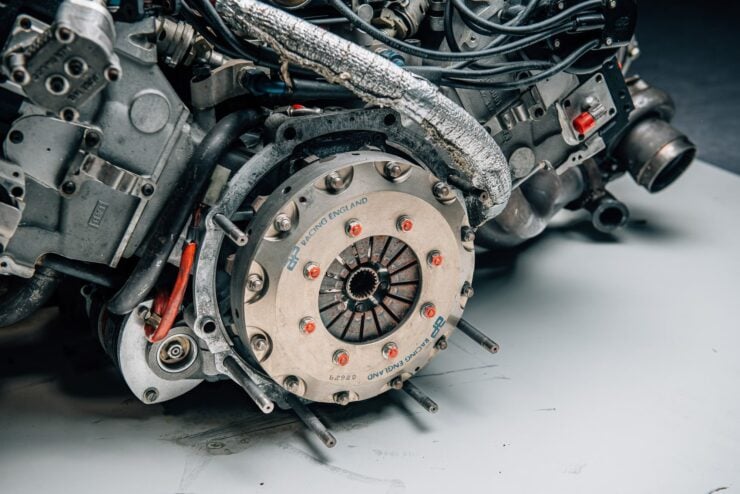
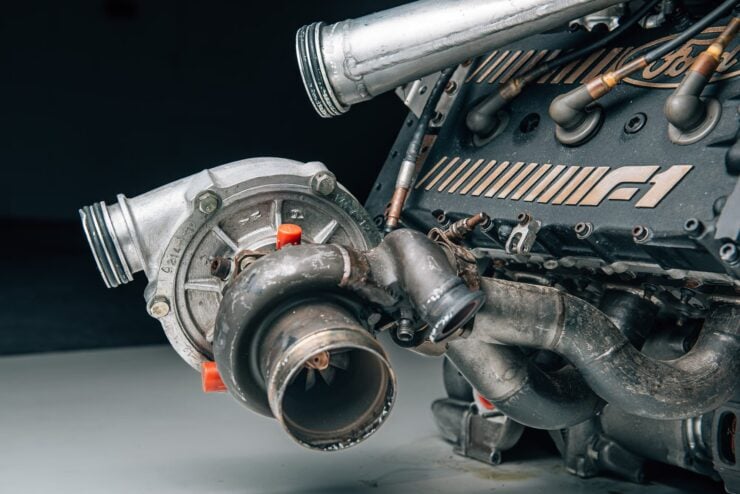
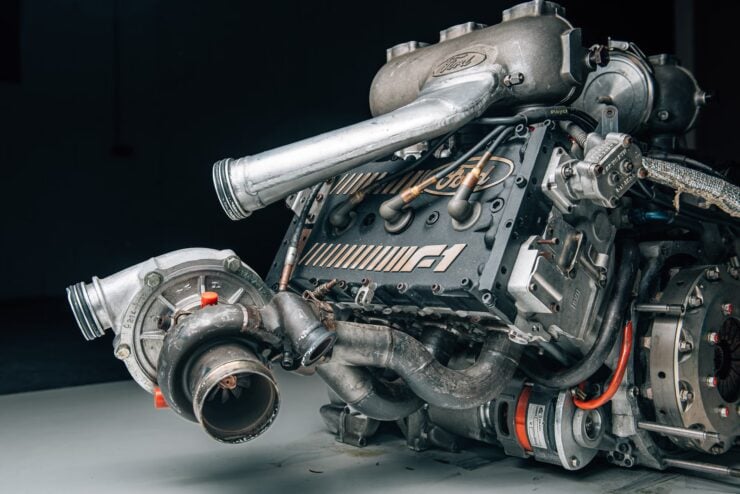
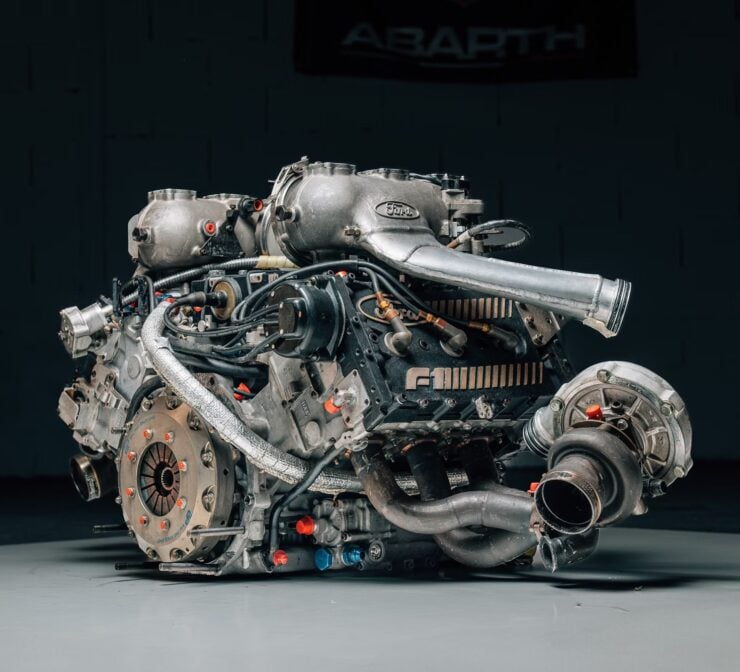

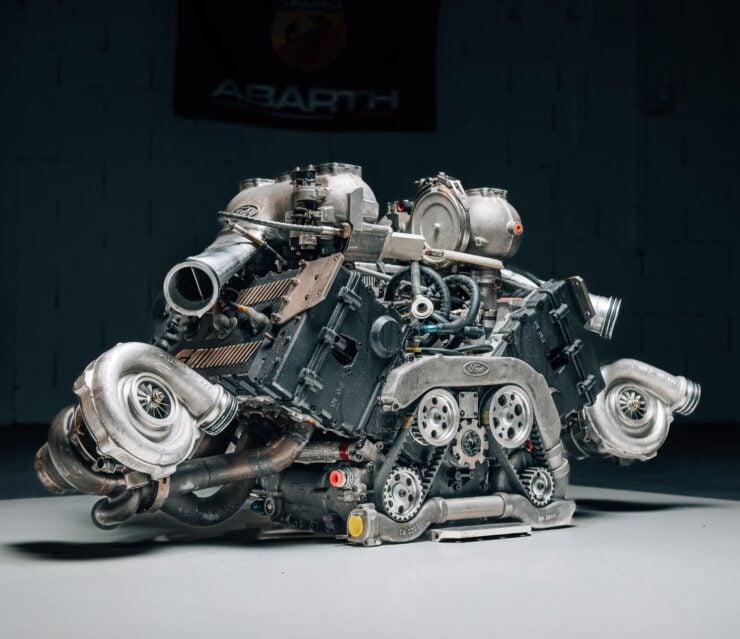
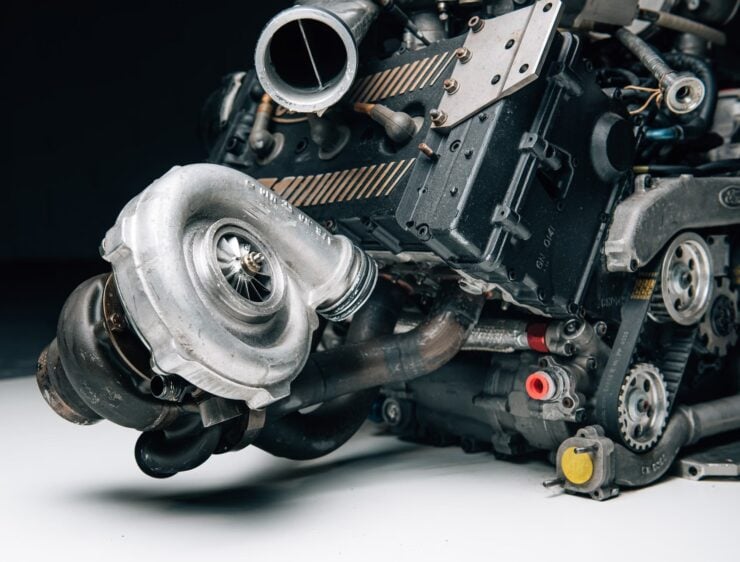
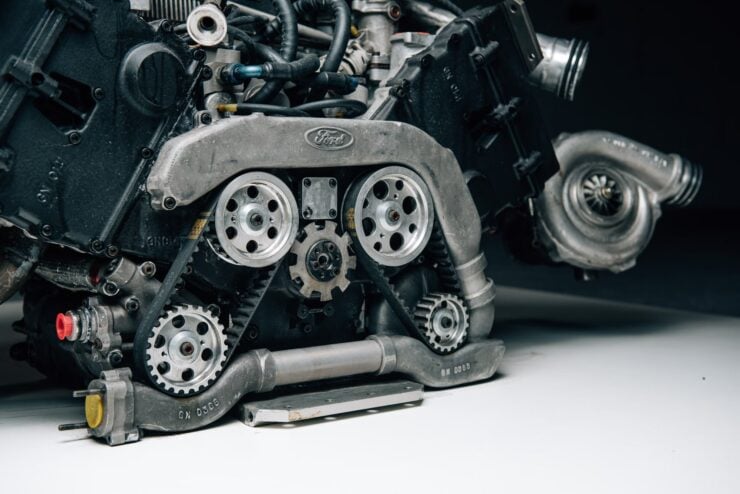
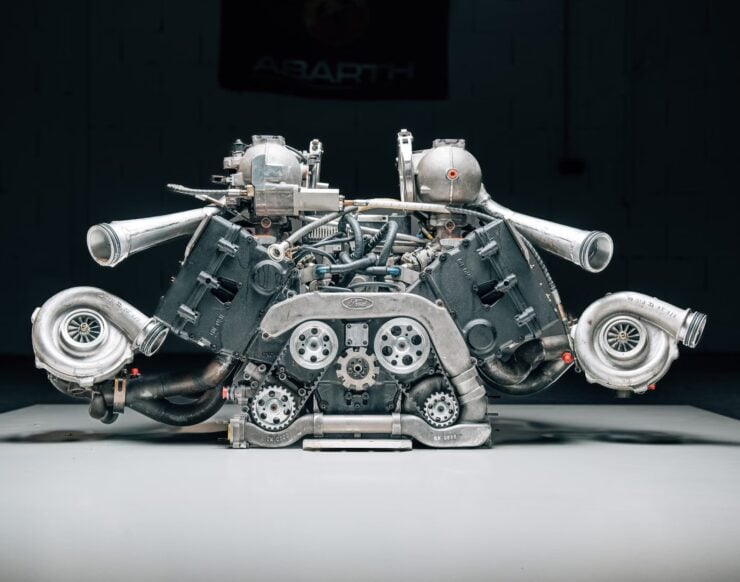

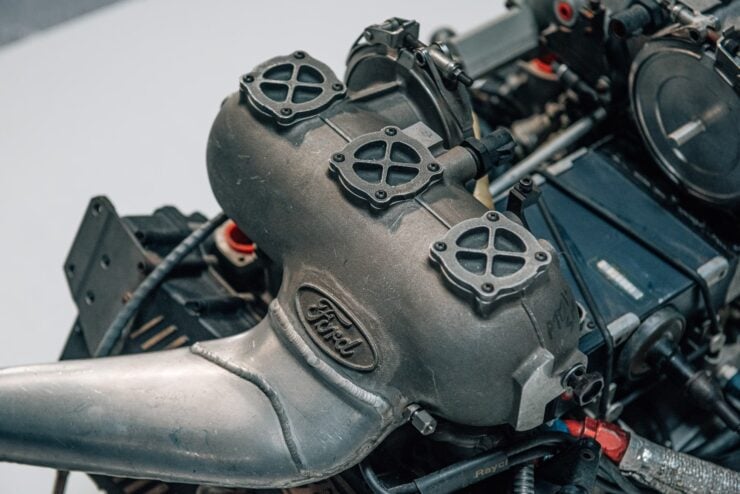

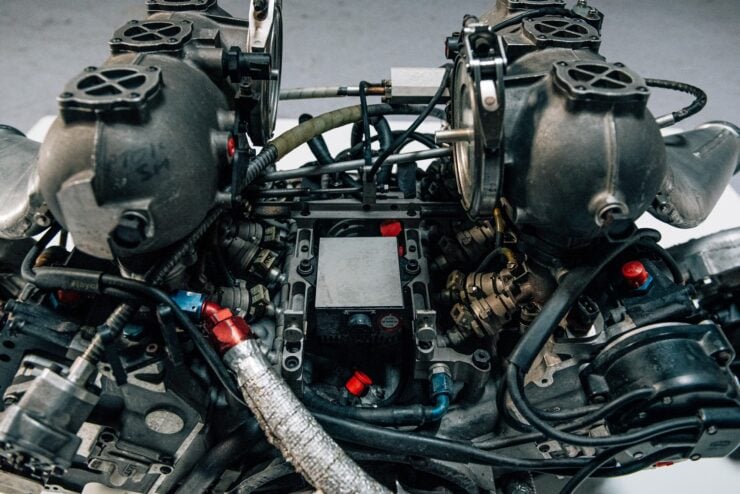
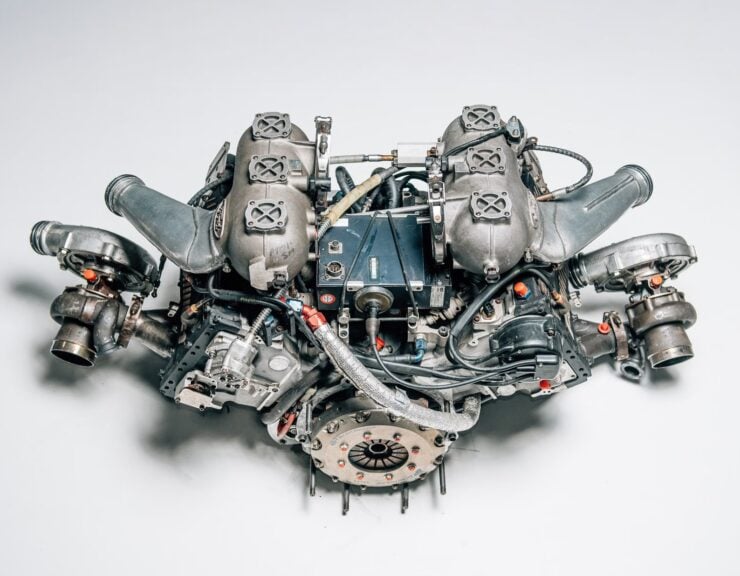
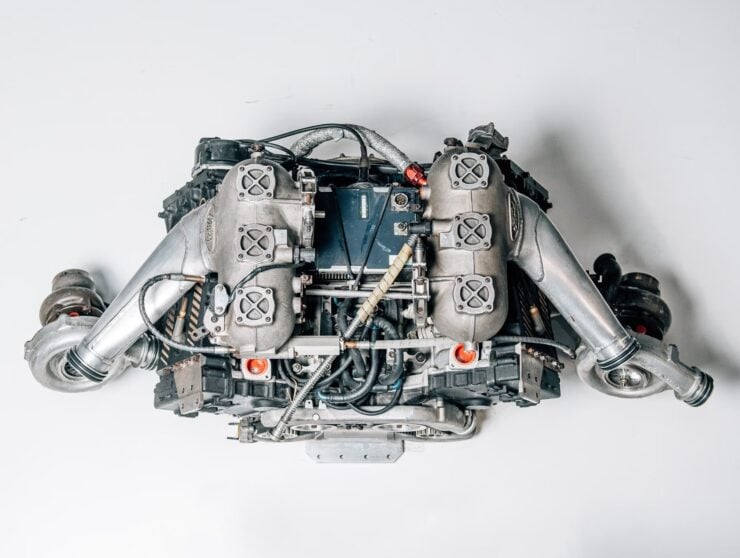
Images courtesy of Collecting Cars

